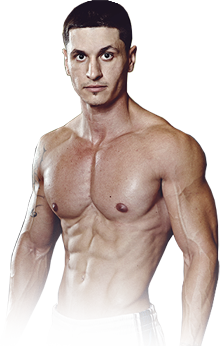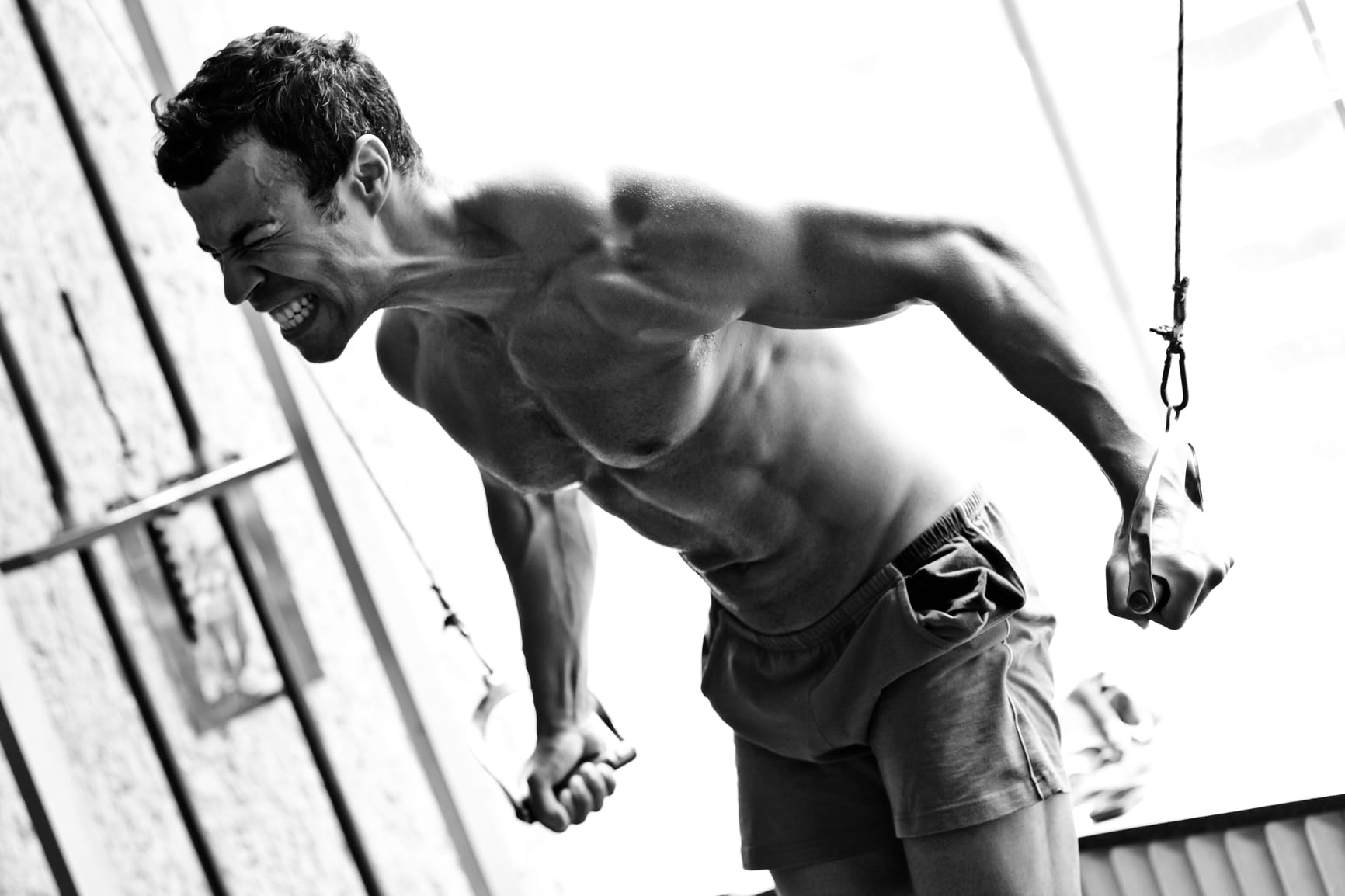Face it, you’ll probably never single-arm curl a 75 pound dumbbell with strict form for 4 sets of 12. (Read This: 5 Reasons Real Men Train for Strength)
Lucky for you, though, you won’t need to.
Look, believing that you’re “not progressing” with your biceps curls because your bench has gone up 10 pounds in the last week and you’ve been stuck curling the same 30 pound dumbbells for the last month, is silly.
Think about a bench press: you’re not only using one of the largest muscle groups in the body – the chest – you’ve got assistance from the triceps, the shoulders, and if your form is dialed in, the core and some leg-drive. Do you think it’s fair to compare that with a single-joint exercise that targets one of the smallest muscle-groups we train directly?
Probably not…but let’s do it anyway.
Adding 10lbs to a 200 pound bench press is a mere 5% increase in weight – this is manageable on even the most basic of training programs. Adding the same amount, however, to 40 pound dumbbell curls (20 in each hand) comes out to be a whopping, and unrealistic 25% jump – an increase that will take even the most hyper-sensitive beginner months to achieve.
Problem is, we know that the main pathway by which we build muscle mass is progressive overload. If we’re not getting stronger, we’re not getting bigger.
But here’s where the importance of understanding volume comes into play.
Volume: Sets x Reps x Weight
 If we perform 20 pound dumbbell curls for 4 sets of 8 reps, our total volume is 640lbs. We now adapt to that stimulus in preparation to handle this stress again in the future. If we go in the gym again the following week and perform the same total volume on curls, our body has no reason to adapt and thus we’re only working hard enough to maintain the gains we’ve made.
If we perform 20 pound dumbbell curls for 4 sets of 8 reps, our total volume is 640lbs. We now adapt to that stimulus in preparation to handle this stress again in the future. If we go in the gym again the following week and perform the same total volume on curls, our body has no reason to adapt and thus we’re only working hard enough to maintain the gains we’ve made.
If we want to increase the total volume, we have a couple of options:
1. Increase the amount of weight used without sacrificing sets and reps.
2. Increase the amount of reps performed without sacrificing weight and sets.
What about increasing the number of sets?
Couldn’t one just add more sets of curls?
Sure, this can be done, but studies show that it’s only possible to a certain degree before we experience diminishing returns.
When it comes to small isolation lifts, since we are limited to the amount of weight we can increase, adding reps would be our best bet.
But if you’ve been training for long enough, you know that it’s easier said than done. Especially as we get further into our lifting career and closer to our genetic ceiling.
I mean seriously, when’s the last time you saw someone performing side laterals with 70lb dumbbells, using strict form?
This is why we’ve got to get a bit more strategic and where I recommend implementing set-expansion a.k.a. beyond failure techniques.
Failure: The point where you cannot complete another repetition with strict form.
The beyond failure techniques I am going to share will allow you to add total volume, without increasing weight, by pushing beyond the normal limits of muscular failure through extending work sets.
This can be done in 1 of 5 ways…and they all require one thing: balls.
Note: I recommend using these methods strictly with small isolation lifts such as: biceps curls; lateral raises; leg extensions; triceps pushdowns; and so forth.
1. Cheating
Once we’ve reached a point of muscular failure, we can no longer perform another rep with form. But if we want to squeeze a few more reps out of our set, we can loosen up our form a bit by using some body English.
The idea of cheat reps is to move the weight through a full range of motion by using a bit of momentum in order to complete the rep. This technique, however, should not be used excessively, nor should you use it as a way to lift heavier.
How to Perform Cheat Reps
This technique should be kept limited to movements like: curls, standing shoulder presses, lateral raises, and rear-delt flyes. It’s never a good idea to cheat on squats, deadlifts, bench press, or any other heavy compound lifts.
Biceps Curls: Once you’ve reached the point where you cannot perform another repetition with strict form, you can use some body sway to help curl the weight upward.
Lateral Raises: Once you’ve reached muscular failure, bend and unbend your knees slightly to create a bit of momentum.
2. Drop Sets
If you reach failure on lateral raises with 30 pound dumbbells, you should still be able to knock out a few more reps with the 20’s. Drop Sets are a method by which you can extend your sets by reducing the weight, after your initial set, in order to add some more volume.
How to Perform Drop Sets
When performing a given exercise and reaching failure at, say, the 12th rep, reduce the weight by about 20% and knock out as many as you can with strict form. Reduce the weight again by another 20% and perform another set to failure. Two or three weight reductions are more than enough for the purpose of expanding the set.
For Example: Triceps Pushdowns
100lbs x 12
80lbs x 6
60lbs x 4
End Set
This technique can be used with any exercise where the weight can be quickly and easily adjusted. (Read This: 5 Brutal Workout Finishers)
3. Negative Training
Once concentric failure is reached, the muscle will still have not achieved eccentric failure and thus the set can be continued using the negative portion of the lift. This is because we are much stronger on the negative than we are on the positive – about 1.75 times stronger to be exact.
 How to Perform Negatives
How to Perform Negatives
Once you’ve reached failure, your spotter will aid in the concentric portion of the exercise by helping you lift the weight for the last few reps. You’ll be responsible for controlling the weight, slowly, through the negative portion of the exercise.
Negative training, under certain circumstances, can be performed without a spotter. For instance, if you’re performing single-arm dumbbell curls, you can use the unoccupied arm to help lift the weight (as the spotter would) and then control the dumbbell through the negative using the working arm, alone.
4. Rest/Pause
A fatigued muscle can regain more than half of its strength in a matter of seconds when resting. Rest/Pause training takes full advantage of this regeneration by allowing you to move maximal poundage, with strict form, after reaching failure.
A study published in The Journal of Sports Medicine and Physical Fitness compared 3 volume matched groups: SELF (reps to self-determined repetition maximum); FAILURE (reps to failure); and REST PAUSE (reps to self-determined repetition maximum with a rest/pause technique). They concluded that rest/pause training leads to greater muscle growth than traditional loading protocols.
How to Perform Rest/Pause Sets
Take your set to the point of failure, release the weight, and rest 10-15 seconds. Using the same amount of weight, perform another 3-4 reps; rest 10-15 seconds, then knock out another 2-3 reps.
For Example: Biceps Curls
30lbs x 10 Reps
Rest 10-15 Seconds
30lbs x 4 Reps
Rest 10-15 Seconds
30lbs x 3 Reps
End Set
5. Forced Reps
This is where you have a training partner help you lift the weight once you can no longer complete any more on your own. Unlike negative sets, though, your spotter will only help just enough to get the weight back up.
How to Perform Forced Reps
Once you’ve reached failure doing full reps on your own, your spotter should place his fingers under the bar and give you the least possible assistance needed to achieve another rep. The spotter may have to assist a bit more as the set progresses, but the set should end before the spotter is doing most of the work.
Conclusion
If you want to grow, you’ve got to achieve progressive overload. But there comes a time, with most small isolation lifts (i.e. curls, pushdowns, lateral raises, etc.), where adding weight and/or reps becomes a slow, arduous process. If you’ve reached that point with any single-joint movement, then it’s time to put your big boy pants on, buck up, and kick your own ass with these beyond failure techniques.

About The Author
 Alain Gonzalez is a former skinny guy turned jacked fitness pro whose transformation story has been featured in articles on websites all over the internet. He has dedicated his life to helping naturally skinny guys like himself to overcome their genetics and take their physiques to the next level.
Alain Gonzalez is a former skinny guy turned jacked fitness pro whose transformation story has been featured in articles on websites all over the internet. He has dedicated his life to helping naturally skinny guys like himself to overcome their genetics and take their physiques to the next level.
Alain Gonzalez
Fitness Author
Strength Coach
Certified Personal Trainer
Founder, www.MuscleMonsters.com







